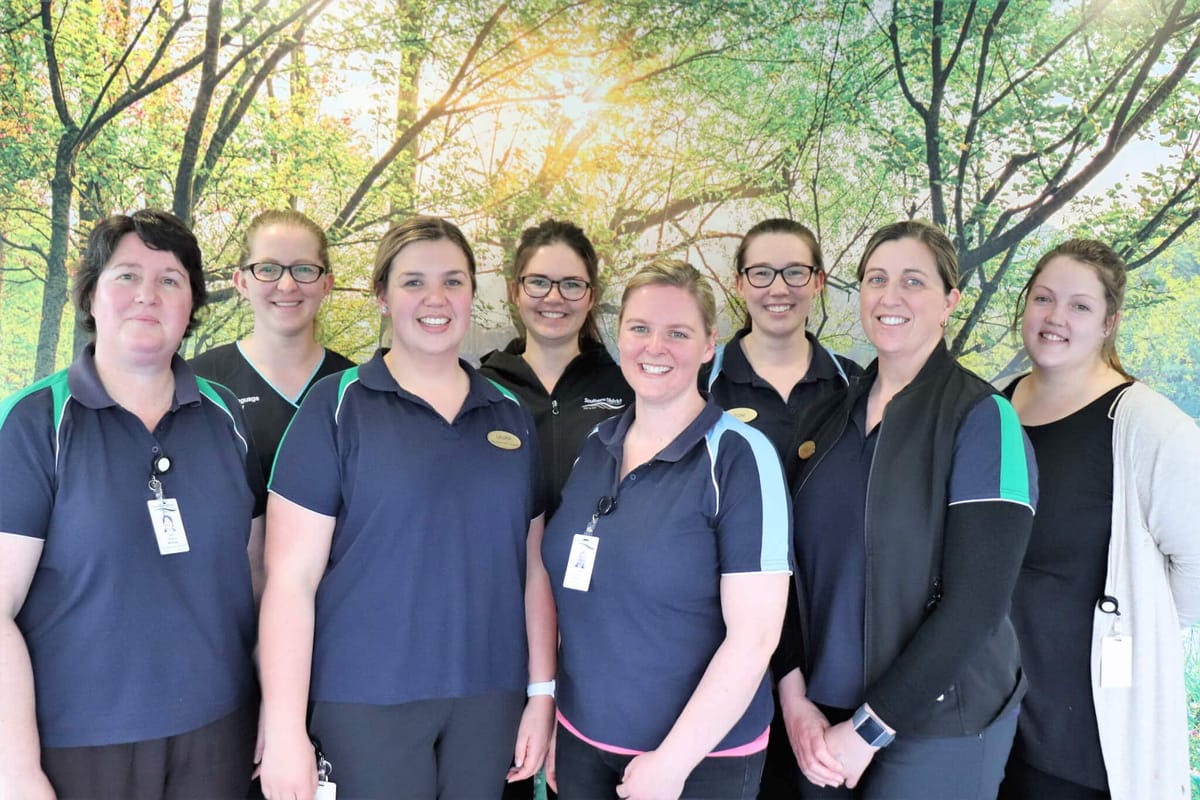A service that provides community based rehabilitation helping Southlanders to recover and make the transition back to their daily lives after hospitalisation is celebrating not only its fifth birthday, but the benefits of an increase in staffing.
This means there is now no waiting list, and Southlanders can access the popular service as soon as they need it.
The REACH (Rehabilitation Early Assessment in the Community and Home) service began in December 2015, and involves a multidisciplinary team which provides important occupational therapy, physiotherapy, speech language therapy and social work services to patients after they leave hospital.
The service sees a wide range of patients, with the majority having neurological conditions such as stroke, says Physiotherapist, Ruth Forbes.
The success of the approach has led to high demand for the service. And now, with a recent increase in staffing, Ruth happily reports that “In December the service will celebrate its fifth birthday in good shape, despite a year where COVID-19 caused several months’ disruption to our home visits”.
“The team was designed to work with people immediately upon leaving hospital, and with a recently approved increase in staffing, we are delighted that we currently no longer have patients having to wait for their rehabilitation,” she says.
The tight-knit team of eight, includes three occupational therapists, two physiotherapists, a speech language therapist, a social worker and a rehabilitation assistant, who provide six weeks’ support for patients over 16 years of age, but this can be extended to 12 weeks when required.
Ruth says they make a really able and competent team, where everyone has the same focus. “We all get on really well, are all good communicators and everyone is working in the same direction.”
Referrals to REACH are made from inpatient services at, but not limited to, Southland Hospital, ISIS Centre at Wakari Hospital and Burwood Hospitals, for patients who live in a 45 minute radius from Southland Hospital. For patients living beyond the 45 minute geographical boundary, other options for rehabilitation input can be explored through the REACH team.
The team’s first visit to a new patient is done as a joint visit with the most appropriate therapist for the patient’s needs, where they introduce themselves and the service and work to understand the patient’s needs and rehabilitation goals.
The occupational therapists look after the functional aspects of the patient’s everyday life including cognition, vision and sensory functioning, upper limb therapy, personal cares, returning to leisure activities and work etc. The physiotherapists’ sphere is exercises and mobility, improving physical functioning of upper and lower limb, working towards their goals of returning to everyday activities, and the speech language therapist oversees verbal and written communication, comprehension, as well as swallow assessments. The social worker looks after financial concerns and emotional wellbeing, and the rehabilitation assistant ensures the patient helps to deliver the programmes that each of the disciplines put in place.
“By visiting our patients at home we also make it easier for people to access our services, including those people with driving restrictions because of medical conditions, or people with disabilities that might find it difficult to travel to the hospital. Treatment sessions may also be provided at the hospital where appropriate (e.g. attending Hydrotherapy), and sometimes in the community such as shops, public amenities, leisure facilities and workplaces as required.
“Sometimes people can find it a bit overwhelming at first with us popping in several times a week to visit them at home, but often they quickly experience improvements in their functioning, and by the end of the six or 12 weeks they are usually really sad to see us go.”
Ruth is an advocate for every service having a multidisciplinary team, because “it is easier and less confusing for patients, and provides a better, more cohesive service”.
REACH is a definite Southland success story. So what’s the secret to their success?
“The best part is that we are a really close-knit team who works well together for the benefit of the patients,” Ruth says.

